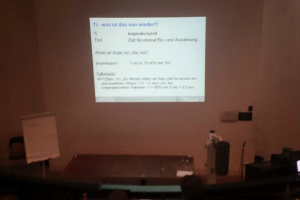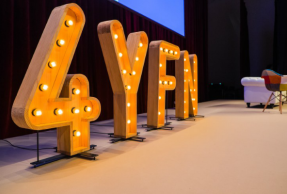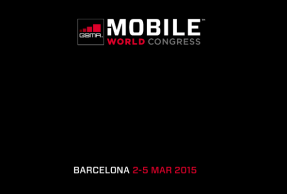Mär18
Invited by Prof. Dr. med. Fietze and Prof. Dr. physiol. Penzel
Challenges of Polysomnographic analysis, Hospital Charité, Berlin 13.06.2015

Berlín, 13 June 2015 - Prof. Dr. med. Fietze and Prof. Dr. physiol. Penzel, directors of the Interdisciplinary Center for Sleep Medicine at the University Hospital Charité in Berlin, with whom we have had the chance to talk and to show SnoreWare's progress in a few occasions, invited us to the 25th anniversary symposium of the Sleep Medicine Research Center, that took place in Berlin on the 12th and 13th June 2015.
To the symposium participated many well know enterprises of the industry with products related to the slepp medicine (such as Philips, ResMed, Somno medics, anamed ...) and took place on the first day at the Ramada Hotel in Berlin, and on the second at the University Campus Virchow-Klinikum in Berlin. While on the first day specific subjects related to sleep and body medicine were presented, the second one was dedicated to the analysis of polysomnografic graphics, which are the representation of all analysed variables during one night sleep
During the session held in German directed by Dr. C. Schöbel to which many employees of the Charité Hospital took part, different polysomnographic studies were presented on the screen and their interpretation discussed among the presenter and the experienced colleagues.
One of the conclusions that we could extract from that event was the difficulty of the analysis, which is done by professionals. An automatic tool for diagnosis doing the interpretation of the graphs seemed to not exist at that point, according to information exchanged.
After the coffee break some videos of patients under study were presented some of them with very rare behaviors. Those lead to an exchange of experiences and interpretation that showed us the complexity of the subject and of the sleeping characteristics of the human being. Nevertheless participants agreed that those were extreme uncommon cases and exchanged the way to proceed with those patients, sometimes engaging unpredictable talks and reactions with the laboratory technicians. None of them remembered anything about those on the day after, were very surprised and could not argument what the video showed them to have done the night before.
To the symposium participated many well know enterprises of the industry with products related to the slepp medicine (such as Philips, ResMed, Somno medics, anamed ...) and took place on the first day at the Ramada Hotel in Berlin, and on the second at the University Campus Virchow-Klinikum in Berlin. While on the first day specific subjects related to sleep and body medicine were presented, the second one was dedicated to the analysis of polysomnografic graphics, which are the representation of all analysed variables during one night sleep
During the session held in German directed by Dr. C. Schöbel to which many employees of the Charité Hospital took part, different polysomnographic studies were presented on the screen and their interpretation discussed among the presenter and the experienced colleagues.
One of the conclusions that we could extract from that event was the difficulty of the analysis, which is done by professionals. An automatic tool for diagnosis doing the interpretation of the graphs seemed to not exist at that point, according to information exchanged.
After the coffee break some videos of patients under study were presented some of them with very rare behaviors. Those lead to an exchange of experiences and interpretation that showed us the complexity of the subject and of the sleeping characteristics of the human being. Nevertheless participants agreed that those were extreme uncommon cases and exchanged the way to proceed with those patients, sometimes engaging unpredictable talks and reactions with the laboratory technicians. None of them remembered anything about those on the day after, were very surprised and could not argument what the video showed them to have done the night before.
No video selected.








